The Virgen de la Candelaria Festival, also known as the celebration of “Mamacha Candelaria”, honors the Patroness of Puno, recognized as the folklore capital of the Americas. This cultural and religious event, held from January 24 to February 13, reaches its peak on February 2.
This festival blends ancestral traditions from the pre-Hispanic world with Catholicism, paying tribute to both the “Virgen de la Candelaria” and “Pachamama” (Mother Earth). Each year, thousands of musicians and dancers gather in Puno, on the shores of Lake Titicaca, to take part in one of Peru's most significant and representative cultural expressions.
Stay with us as we explore the incredible, almost magical, ancestral culture that surrounds the devotees during this celebration.
History of the Virgen de la Candelaria Festival
The devotion to the Virgen de la Candelaria dates back to 1392 when her image appeared on a rock on the island of Tenerife, Spain. This religious fervor spread to the Americas during the colonial era, arriving in Puno with evangelization efforts.
Local veneration began in the town of Huancané, Arcani, north of Puno. On February 2, 1583, during a procession of the Virgin brought from Cádiz, Spain, she was credited with protecting the Villa de Puno by driving back rebels. This event cemented her status as a protective figure in the region.
By 1781, growing devotion led to her proclamation as Patroness of Puno. During the colonial period, her image became a tool for evangelization, merging the Catholic faith with the local traditions of the Peruvian highlands.
Despite its Christian origins, the festival connects deeply to the pre-Hispanic agricultural ritual calendar. The music, dances, and ceremonial elements reflect the region's rich ancestral traditions, showcasing a unique fusion of religion and culture.
The meaning of La Candelaria
The Virgen de la Candelaria, also called “Candelaria”, takes her name and symbolism from her depiction: holding the child in her arms, a lit candle in her right hand, and a basket with two doves. This image is closely tied to Jewish tradition, where the candle symbolizes guiding light, and the doves represent the offering of purification after childbirth.
Her origin is linked to the moment when Mary presented baby Jesus at the temple in Jerusalem—a ritual of purification and dedication that reinforces her role as a symbol of protection, purity, and faith.
Where is the Virgen de la Candelaria celebrated?
The Virgen de la Candelaria Festival is primarily celebrated in Puno, Peru, known as the capital of Peruvian folklore.
Extra Fact » Beyond Peru, this celebration also takes place in other Latin American countries like Bolivia, Chile, Venezuela, Colombia, and regions of Spain. However, Puno is where this festival reaches its highest cultural and religious expression.
When is the Virgen de la Candelaria Festival in Puno 2025?
In 2025, the Virgen de la Candelaria Festival in Puno will run from January 24 to February 13, with February 2 as the central day. This celebration stands out as one of the most significant and iconic events of Andean culture.
Main events
The Virgen de la Candelaria Festival in Puno showcases a dynamic blend of faith, culture, and tradition. Here are the key events:
- January 24–31: Novenas and liturgical ceremonies take place at the Virgen’s Sanctuary, marking the start of the religious activities.
- February 1 (Eve): The festival officially begins with the entry of candles and K’apos (wood burned on the sanctuary’s altar), a ritual rich in symbolism and tradition.
- February 2 (Central Day): A solemn mass is held, followed by the emotional procession of the Virgin, with thousands of devotees accompanying her through Puno’s streets.
- February 3: The day is dedicated to traditional dances, featuring performances by groups dressed in regional attire.
- Octava: The celebration concludes with the Gran Parada, which includes a costume and lights contest, the final mass, and the famous Cacharpari, a symbolic farewell to the Virgin with music, dance, and heartfelt devotion.
Procession of the Virgen de la Candelaria
The procession of the Virgen de la Candelaria is one of the most solemn and significant moments of the festival. Following the misa del alba (dawn mass), the ritual begins with a symbolic act of ancestral purification. The Virgin’s image is carried through the streets of Puno, accompanied by traditional music and native dances featuring instruments like wooden flutes.
Dance competitions in Puno
The Autóctonas Dance Competition is a highlight of the festival and takes place during the first week of February. Dancers in dazzling costumes showcase the cultural roots of the region at the Enrique Torres Belón Stadium. On February 8, the Band Competition complements the event, celebrating the music that brings life to the dances.
Some of the most iconic dances include:
- Diablada
- Morenada
- Caporales
- Kullawadas
- Tinkus
- Sayas
- Reyes Morenos
- Waca-wacas
- Tún-tunas
- Sambos Tundiques
- Sikuris
- Siku Morenos
- Ayarachis
- Zampoñistas, among others.
Blessing of costumes
The costumes worn during the dances are not mere clothing; they embody cultural identity and the connection between Andean cosmology and Christianity. Each costume is meticulously crafted as an offering of devotion and gratitude to the Virgin. Before being worn, they are presented during a special mass to receive a blessing.
Virgen de la Candelaria: Octava and final veneration
The Octava of the Virgen de la Candelaria begins with vespers at 7:00 p.m., when dance groups take to the streets in their elegant costumes, honoring the Virgin while the city lights up with fireworks.
The celebration concludes with a grand 4-kilometer procession, where devotees and dancers accompany the Virgin, blending religious fervor with cultural expressions rooted in tradition.
Cultural and economic importance of the Virgen de la Candelaria Festival in Puno
The Virgen de la Candelaria Festival has a profound cultural and economic impact. Beyond the 40,000 dancers and 9,000 musicians who take center stage, over 35,000 people contribute indirectly. Artisans and embroiderers play a vital role, in creating the intricate costumes, boots, bags, and jingles used in the festivities. Organizers and logistics teams ensure the seamless execution event, boosting key sectors like commerce, gastronomy, and tourism in Puno.
Cultural Heritage
On November 27, 2014, UNESCO declared the Virgen de la Candelaria Festival an Intangible Cultural Heritage of Humanity. This celebration is a unique fusion of colonial religion and the cultural traditions of the Quechua, Aymara, and Mestizo communities. Over two weeks, Puno transforms into a vibrant stage of devotion, featuring dances, music, and attire that showcase the region's rich cultural heritage. Recognized as one of Peru's most joyful and iconic festivals, it firmly establishes Puno as the folklore capital of the Americas.
The official schedule of the Virgen de la Candelaria Festival 2025
January - The start of the festivities
| January 13–24 | Costume of Lights Exhibition at the Casa de la Cultura. |
| Friday, January 17 | Official presentation of the Festivity in honor of the Virgen de la Candelaria 2025 at Enrique Torres Belón Stadium. |
| Saturday, January 19 | Institutional parade through the Historic Center of Puno. |
| January 22–31 | Peruvian Handicrafts Fair at Manuel Pino Park. |
| January 24 – February 1 | Novena Masses for the Virgin at San Juan Bautista Parish. |
| Saturday, January 25 | Election and coronation of the Queen of Folklore 2025 at Eduardo Rodríguez Coliseum. |
| January 27 – February 14 | Cultural exhibition of traditional costumes at the Casa de la Cultura. |
| Thursday, January 30 | Runway show featuring traditional costumes, origin-based dances, and Costume of Lights at Puno’s Plaza Mayor. |
February - Main festivities
| Saturday, 1 | Cavalry and Qhapus Parade through Puno’s Historic Center. |
| Saturday, 1 | Candle Blessing in front of San Juan Bautista Parish. |
| Saturday, 1 | Vespers Celebration at the atrium of Puno’s Minor Basilica Cathedral. |
| Saturday, 1 | First day of the Traditional Dance Contest in honor of the Virgen de la Candelaria 2025 at Monumental UNA Puno Stadium. |
| Sunday, 2 | Second day of the Traditional Dance Contest in honor of the Virgen de la Candelaria 2025 at Monumental UNA Puno Stadium. |
| Sunday, 2 | Solemn Festive Mass, Veneration, and Procession at the atrium of Puno’s Minor Basilica Cathedral. |
| Thursday, 6 | Sikuris Concert at Puno’s Municipal Theater. |
| Friday, 7 | Sikuris Gathering at Puno’s Plaza Mayor. Runway Show of Traditional Costumes, Origin-Based Dances, and Costume of Lights at Puno’s Plaza Mayor. |
| Sunday, 9 | Dance Contest featuring Costumes of Lights at Monumental UNA Puno Stadium. |
| Monday, 10, and Tuesday, 11 | Veneration Days in Puno’s Historic Center. |
| February 12–15 | Farewell Mass (Cacharparis) at the Sanctuary of the Virgen de la Candelaria. |
How to get to Puno
From Lima to Puno
By plane:
There are no direct flights to Puno, but you can fly from Lima to Juliaca Airport, the closest option. The flight takes approximately 1 hour and 30 minutes. From Juliaca, take a taxi or bus to Puno, which is about 1 hour away.
By bus:
For a budget-friendly option, you can travel by bus from Lima to Puno. This journey takes around 21 hours and, while economical, it can be quite demanding due to its length.
From Cusco to Puno
By plane:
Some airlines offer direct flights between Cusco and Juliaca, though availability depends on the season. The flight takes about 1 hour.
By bus:
Buses are a popular choice for travelers who want to enjoy the stunning Andean landscapes. The journey takes 7 to 8 hours, passing through breathtaking mountains and valleys.
By train:
For a unique experience, take the train from Cusco to Puno. Although more expensive, the 10.5-hour journey includes stops at charming Andean towns, panoramic views of the mountains, and opportunities to purchase local crafts. You can choose between luxury and more affordable services, depending on your budget.
Read More » Trains from Cusco to Machu Picchu
What to bring to the Virgen de la Candelaria Festival
If you're attending the Virgen de la Candelaria Festival in Puno, it’s essential to prepare for the cold weather and occasional rain. Here’s what you’ll need:
- Sunscreen: Protect your skin from high-altitude UV rays.
- Lip balm: Keep your lips hydrated to prevent dryness from the cold.
- Warm clothing: Jackets, sweaters, and thermal wear are must-haves to combat the highland chill.
- Poncho or umbrella: Rain is common during this season, so stay prepared.
Tips for your visit
- Book your flights and accommodations 2 to 3 months in advance to avoid issues.
- Puno sits at over 3,800 meters (12,500 feet) above sea level, which can cause altitude sickness for some people. Arrive a few days before the festival to acclimatize and explore the city at a relaxed pace.
- Don’t miss the opportunity to enjoy the regional flavors. Dishes like trout, chairo, kankacho, and alpaca chicharrón are culinary highlights you’ll love.
Experience the Virgen de la Candelaria Festival
The Virgen de la Candelaria Festival in Puno offers a unique chance to immerse yourself in the cultural richness and Andean traditions of Peru. From the dances and music to the heartfelt devotion of its participants, this celebration showcases the remarkable blend of cultures that define the region. Make this experience unforgettable!

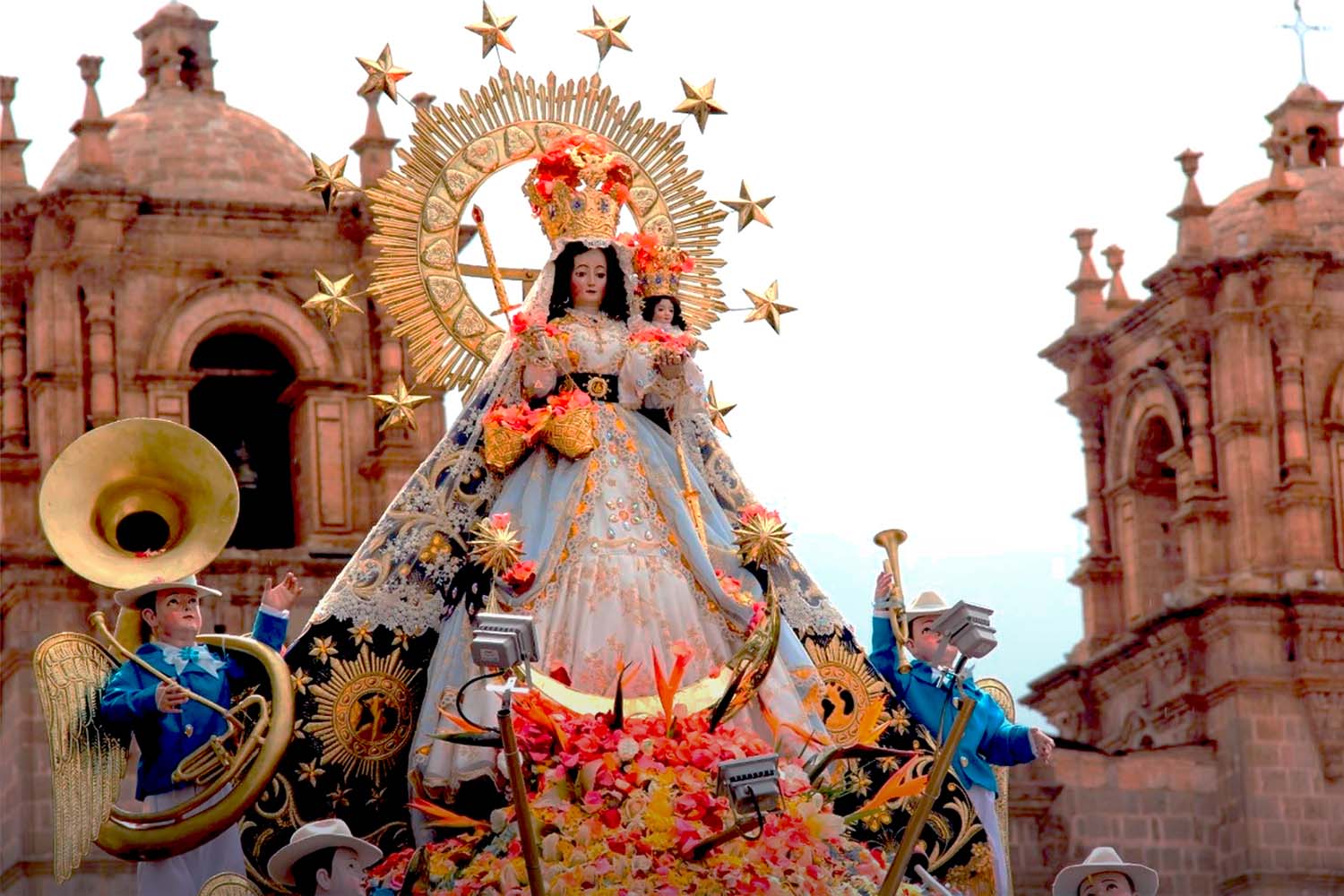
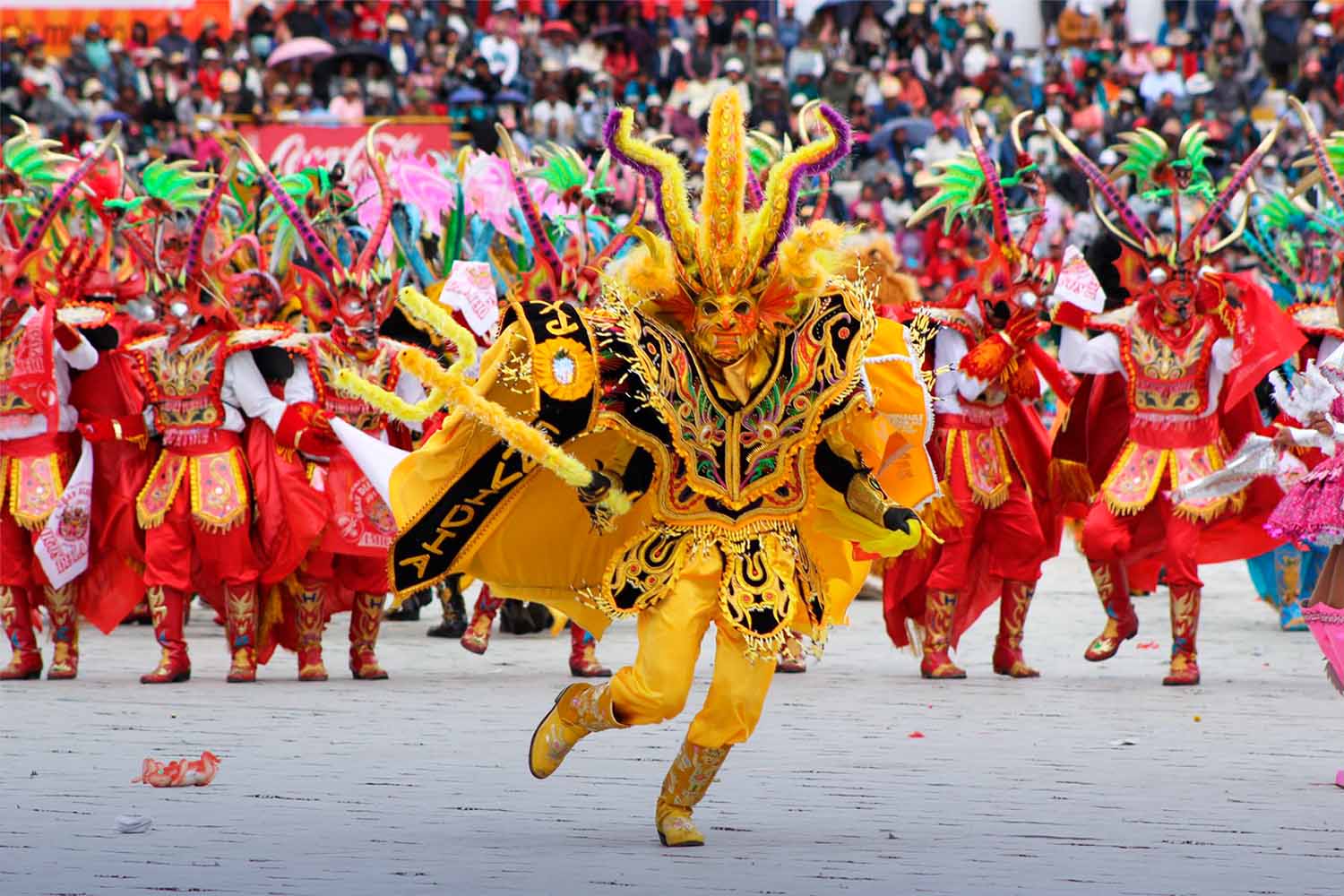
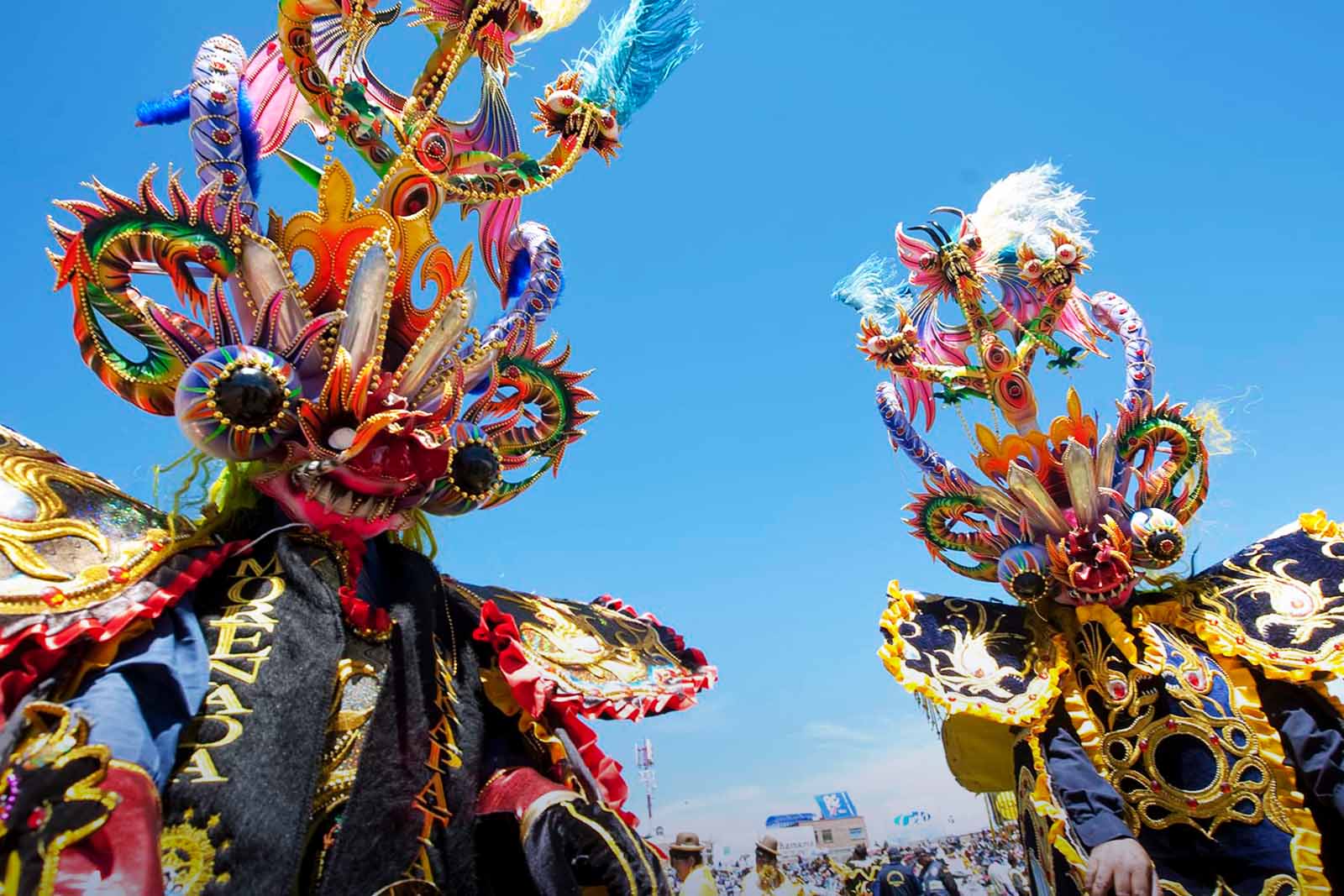
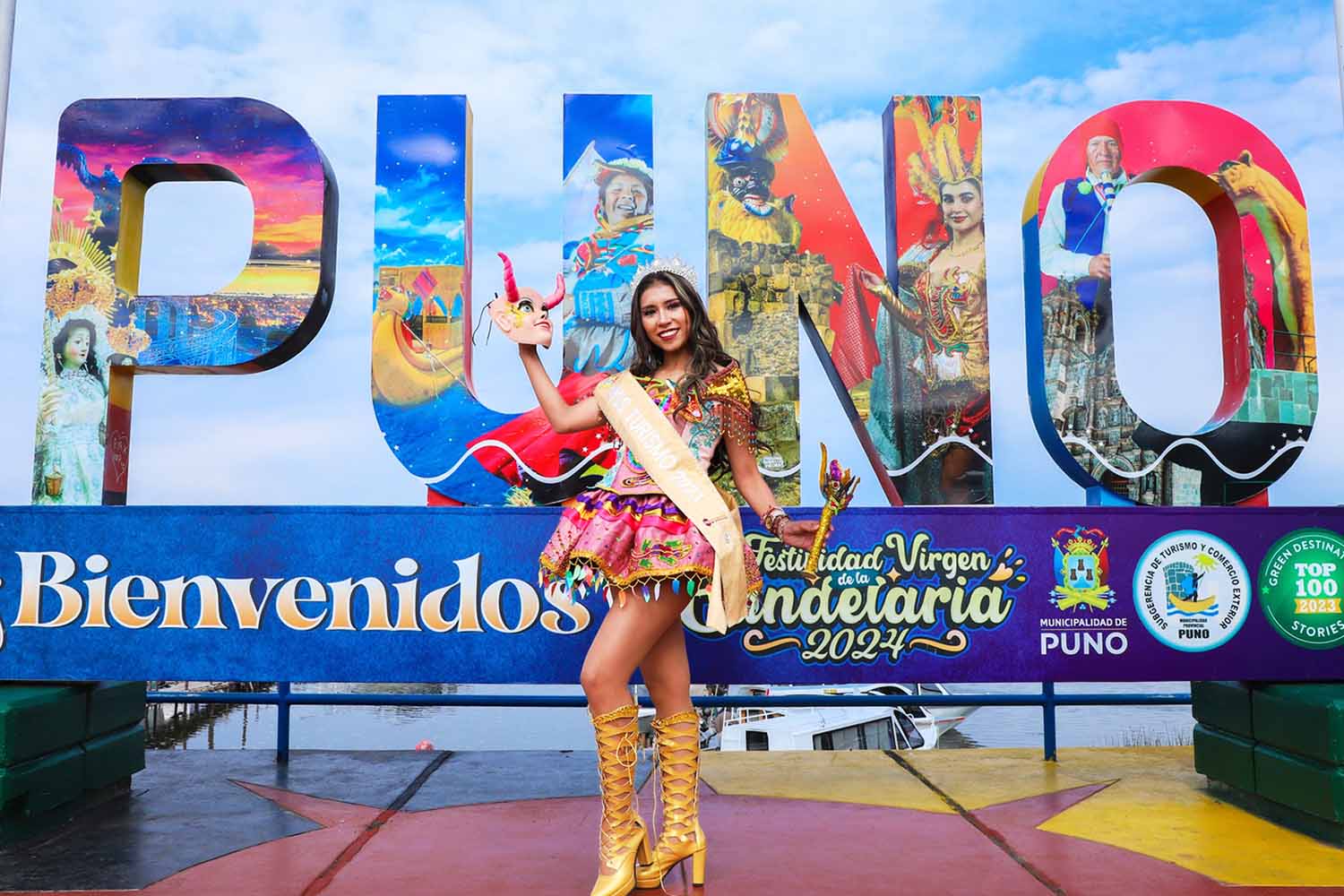
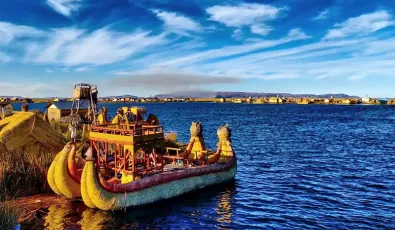
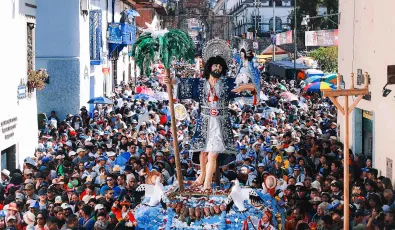


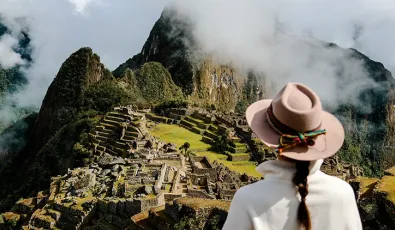

Add new comment